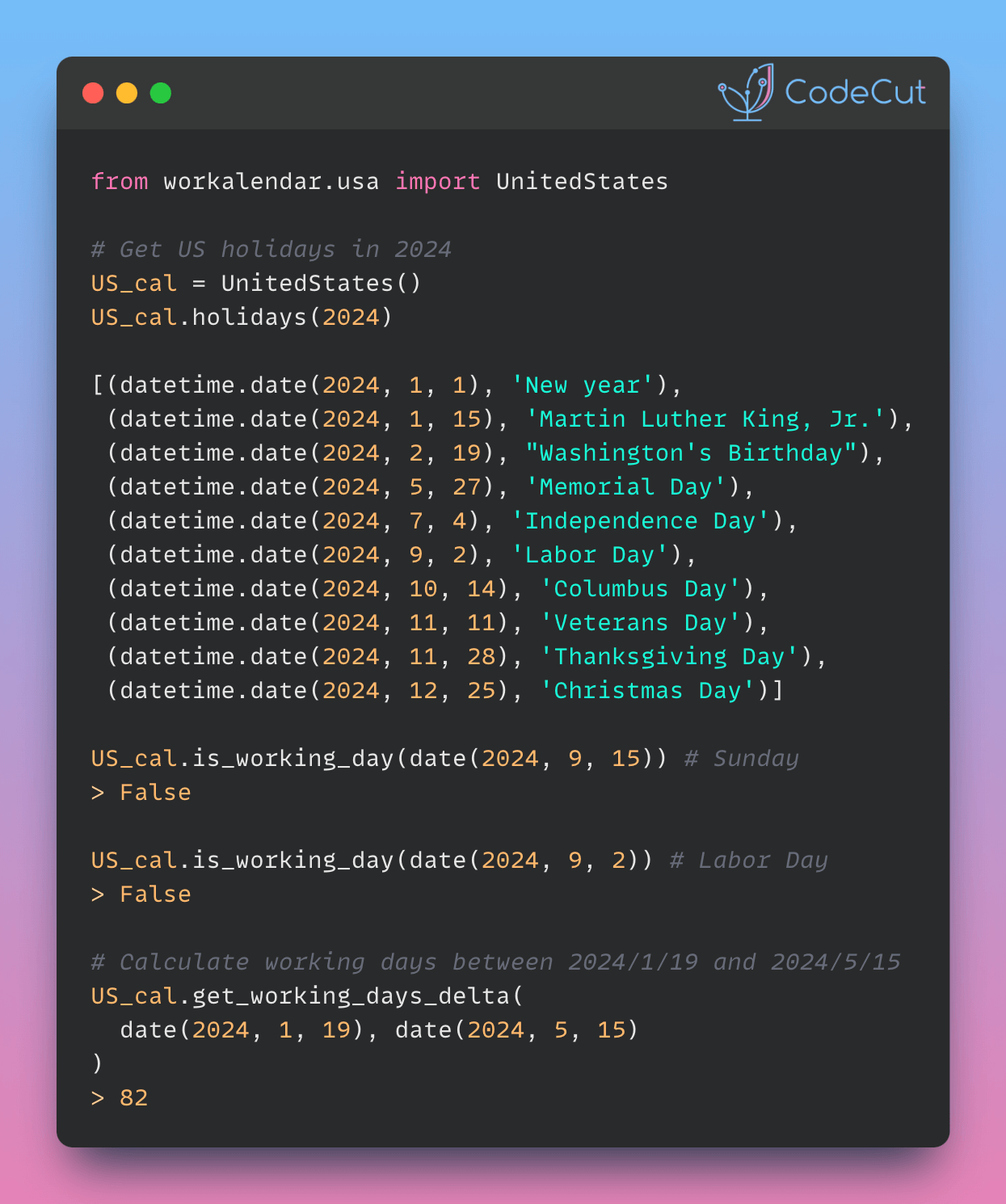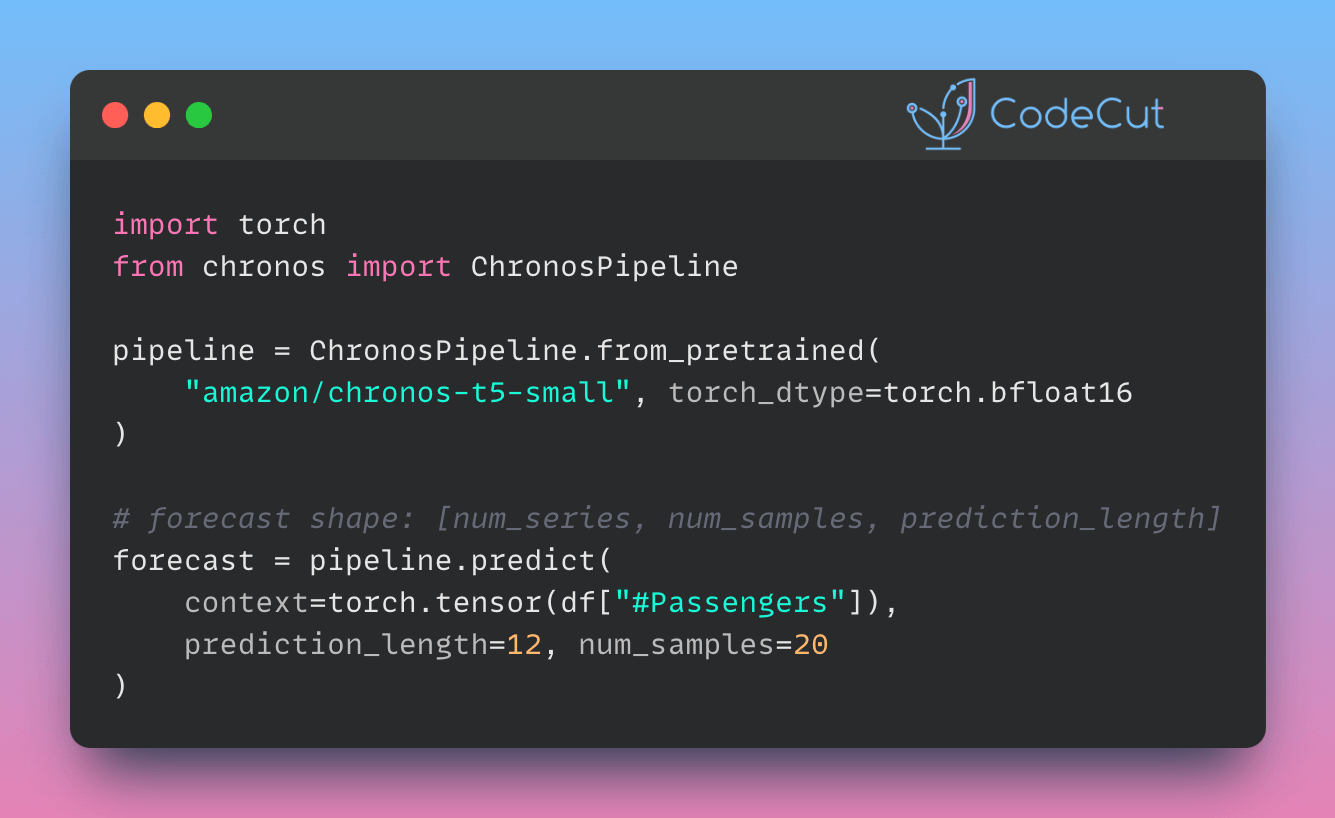Incorporating holiday and working day information into predictive models can enhance accuracy, but it’s challenging due to regional variations in holiday schedules.
Workalendar simplifies this process by handling working days, holidays, and business calendars for various countries and regions.
Here are some examples:
Get US holidays in 2024:
from datetime import date
from workalendar.usa import UnitedStates
US_cal = UnitedStates()
US_cal.holidays(2024)[(datetime.date(2024, 1, 1), 'New year'),
(datetime.date(2024, 1, 15), 'Birthday of Martin Luther King, Jr.'),
(datetime.date(2024, 2, 19), "Washington's Birthday"),
(datetime.date(2024, 5, 27), 'Memorial Day'),
(datetime.date(2024, 7, 4), 'Independence Day'),
(datetime.date(2024, 9, 2), 'Labor Day'),
(datetime.date(2024, 10, 14), 'Columbus Day'),
(datetime.date(2024, 11, 11), 'Veterans Day'),
(datetime.date(2024, 11, 28), 'Thanksgiving Day'),
(datetime.date(2024, 12, 25), 'Christmas Day')]Check if a date is a working day:
US_cal.is_working_day(date(2024, 9, 15)) # SundayFalseUS_cal.is_working_day(date(2024, 9, 2)) # Labor DayFalseCalculate the number of working days between two dates, excluding weekends and holidays:
# Calculate working days between 2024/1/19 and 2024/5/15
US_cal.get_working_days_delta(date(2024, 1, 19), date(2024, 5, 15))82Get Japan holidays in 2024:
from workalendar.asia import Japan
# Get holidays in Japan
JA_cal = Japan()
JA_cal.holidays(2024)[(datetime.date(2024, 1, 1), 'New year'),
(datetime.date(2024, 1, 8), 'Coming of Age Day'),
(datetime.date(2024, 2, 11), 'Foundation Day'),
(datetime.date(2024, 2, 23), "The Emperor's Birthday"),
(datetime.date(2024, 3, 20), 'Vernal Equinox Day'),
(datetime.date(2024, 4, 29), 'Showa Day'),
(datetime.date(2024, 5, 3), 'Constitution Memorial Day'),
(datetime.date(2024, 5, 4), 'Greenery Day'),
(datetime.date(2024, 5, 5), "Children's Day"),
(datetime.date(2024, 7, 15), 'Marine Day'),
(datetime.date(2024, 8, 11), 'Mountain Day'),
(datetime.date(2024, 9, 16), 'Respect-for-the-Aged Day'),
(datetime.date(2024, 9, 22), 'Autumnal Equinox Day'),
(datetime.date(2024, 10, 14), 'Sports Day'),
(datetime.date(2024, 11, 3), 'Culture Day'),
(datetime.date(2024, 11, 23), 'Labour Thanksgiving Day')]Next Step
If you liked this blog post, you might also like:
- Pendulum: Python Datetimes Made Easy – For intuitive datetime handling and timezone management.
- Maya: Convert the string to datetime automatically – For effortless string-to-datetime conversion.
- Datefinder: Automatically Find Dates and Time in a Python String – For extracting dates from text.





